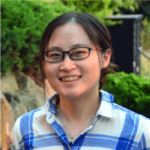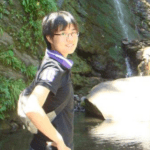A Multiscale Simulation Platform for Connected and Automated Transportation Systems
Overview
Traffic simulation is an important tool that can assist researchers, analysts, and policymakers to test vehicle/traffic control algorithms, gain insights of micro/macro traffic dynamics, and design traffic management strategies. However, different implementations require different simulation scales and there is no multiscale simulation platform that satisfies all requirements. In this research, we propose to establish a multiscale vehicle-traffic-demand (VTD) simulation platform for connected and automated transportation systems (CATS). This is in particular for the control and management of CATS with varying penetration of connected and automated vehicles (CAVs). The research group has built a microscopic vehicle-in-the-loop (VIL) simulation platform, which uses Unity 3D to simulate/visualize vehicle operations/dynamics and Simulation of Urban Mobility (SUMO) to simulate traffic flow dynamics. Figure 1 shows an overview of the VIL simulation model.
The development of the multiscale VTD will leverage this existing platform, which will be extended to integrate Multiagent Transport Simulation (MATSim) to simulate large-scale traffic, human activities and travel demand generation processes. In addition to the development of the multiscale VTD simulation platform, we will also propose several research tasks to utilize the platform to better understand traffic flow dynamics. This will include using data-driven and AI methods to test whether the Macroscopic Fundamental Diagram
(MFD) exists for homogeneous regions of the simulated network, and how to understand and better approximate complex traffic dynamics such as dynamic path travel times and/or the queuing process of a given transportation corridor.
The proposed research will be built upon the previous research results the team and other C2Smart partners have produced in the last several years. In particular, Dr. Joseph Chow from NYU has been leading the development of simulation testbeds for CAVs and has rich experience in developing transportation models using MATSim. Our team and Dr. Chow’s team have agreed to collaborate on this proposed investigation to integrate MAMsim with Unity and SUMO, as well as to add freight-specific models into the multiscale VTD platform.
Research Objectives & Deliverables
The proposed research contains four major research tasks:
Task 1. Design of the multiscale simulation platform VTD
Task 2. Development of the multiscale simulation platform VTD
Task 3. Investigation of traffic dynamics using VTD
Task 4. Final report
The following deliverables/products will be produced:
● An interim report on VTD design
● An interim report on VTD development, validation, and testing
● A final report including simulation/testing results and major findings and recommendations
Personnel
| Principal Investigator | Xuegang Ban |
| Funding Source | USDOT: $100,000; UW (cost share): $50,000 |
| Total Project Cost | $150,000 |
| USDOT Award # | 69A3551747124 |
| Implementation of Research Outcomes | A multiscale vehicle-traffic-demand simulation platform |
| Impacts/Benefits of Implementation | Help academia, industry, and agencies test/validate CAV- |







